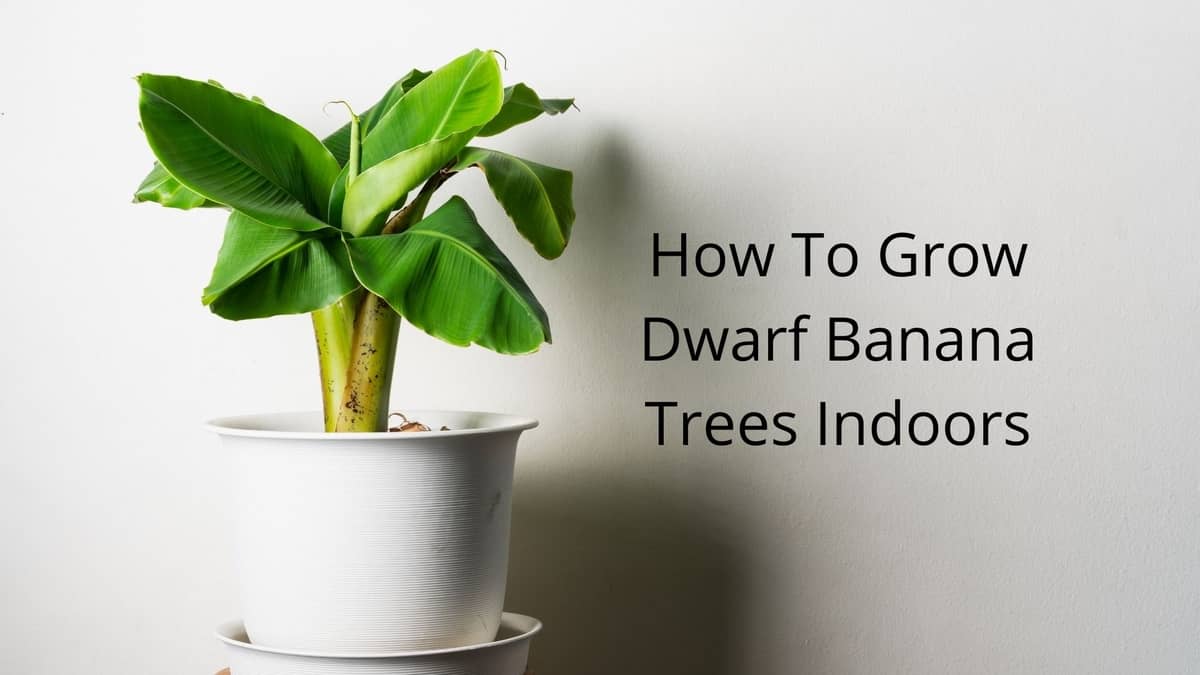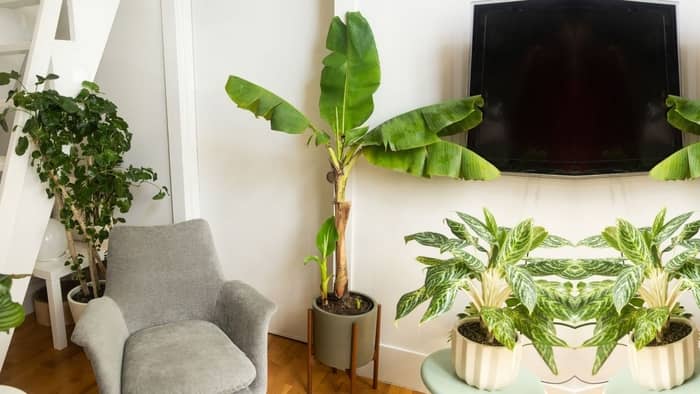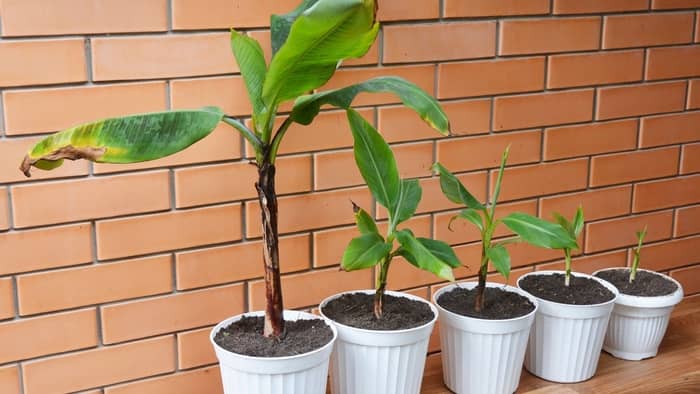Last Updated on January 17, 2022 by Guillermina
How to grow Dwarf Banana trees indoors? Click to learn the basic steps for maintaining and growing this exotic plant.
Banana is a fruit that comes from the genus Musa, the family Musaceae, and is native to Southeast Asia. It is safe to say that the banana is one of the most important fruit crops in the world. It is valued worldwide for its taste, nutritional value, and mostly because of its availability throughout the year.
Did you know that ripe fruit contains as much as 22 percent carbohydrates and is rich in dietary fiber, potassium, manganese, and vitamins B6 and C?
Regardless of size, they can be a great addition to any garden and home. Keep reading to find out how to grow Dwarf Banana trees indoors.
Description Of The Dwarf Banana Variety
Did you know that the Dwarf Banana tree is not actually a tree? The Dwarf Banana, often known as Musa Nana is a tropical plant (herbaceous perennial) with broad paddle-shaped leaves that grow out of its stalky center.
Although it may seem quite unbelievable, this type of banana has been grown indoors since Victorian times. We call them dwarfs, but the Musa banana can still easily reach 6 feet / 2 m (under the right conditions). Its leaves are massive and grow quickly, however, they are incredibly weak and susceptible to damage.
How Tall Will A Banana Tree Grow Indoors?
Most banana varieties grow too large to be kept as houseplants; however, a full-grown Dwarf Banana tree spreads up to 10 inches wide and can grow up to 20 inches tall. This makes it ideal for growing indoors in a container.
Can You Eat Bananas From A Dwarf Banana Tree?
Truth be told, not all banana plants bear fruit that you can eat. Some varieties such as Red Banana, Dwarf Banana, and Pink Velvet Banana bear fruit but it is not edible. They are mostly grown indoors because of their flowers.
How To Grow Dwarf Banana Trees Indoors?
Pot, Soil & Fertilization
The Dwarf Banana tree can easily grow in containers, but they will generally need at least a 15-gallon pot for optimal growth. When grown indoors, they have slightly higher requirements than those grown outdoors, due to the limited capacity provided by the pot.
Furthermore, make sure that the soil is well-drained, rich in organic matter, and slightly acidic (ideal pH 5.5-7.0). Banana trees are heavy feeders so it would be best to fertilize them weekly with general purpose fertilizer during spring and summer. The most important thing is to follow the instructions on the label to avoid the danger of over-fertilization.
Light
One common thing for bananas is to love sunbathing; however, will actually accept a range of light conditions from partial shade to full sun. If you have the conditions, place the banana plant in a place where it is exposed to bright light.
Try to provide it with at least six hours of direct sunlight. If natural light is lacking, feel free to artificial growing light. If you have free time, it is recommended to put your banana plant outside from time to time and let it enjoy the natural sun.
Water
Considering their fleshy characteristics be prepared for consistent watering. The banana plant is very sensitive to drought, so try to keep the soil moist, but not overly so as this can lead to root rot.
Humidity & Temperature
Being tropical in nature, the Dwarf Banana prefers high humidity and warm temperatures.
These are the ideal temperature requirements:
- for shoot growth – 78 ° F to 82 ° F (26–28 ° C),
- for fruit growth – 84 ° F to 86 ° F (29–30 ° C).
Finally, keep in mind that banana plants grown indoors rarely bear fruit.
Additional Care For Indoor Dwarf Banana Plant
Pruning
Pruning is not an essential part of maintaining your indoor banana plant unless there are leaves that have turned discolored, aged, or diseased.
The only thing you need to pay attention to are the suckers. A healthy banana will produce a lot of them, so it is necessary to cut these suckers to the ground in order to maintain one mature stem.
Repotting
You will need to transplant your banana plant once a year in order to increase its vigor. In terms of size, try to increase the size of the pot by 2 to 3 inches each year.
As for the process itself, gently remove the plant from the existing pot, loosen the soil around the roots, and prune the aged and damaged roots. Then simply place the plant in a larger pot and water it thoroughly.
Once excess water is drained, your Dwarf Banana plant can return to its original sunny spot.
Propagation
Do you remember those suckers we mentioned earlier? They are a great way to propagate your indoor banana plant. When they reach a height of at least 3 feet, they are ready for the procedure.
Pests & Diseases
The biggest enemy of your banana tree is the banana borer or weevil (Cosmopolites sordidus). However, the good thing about growing indoors is that there is little chance that this pest will attack your plant.
In addition, try to use disinfected gardening tools to prevent the spread of diseases from one banana plant to another.
How Do You Care For A Potted Banana Plant Indoors?
- Use a large capacity container with drainage holes in which you will put organically rich, deep, and slightly acidic soil.
- Provide it with at least 6 hours of sunshine a day.
- Water regularly, but avoid overwatering.
- Weekly fertilization with general purpose fertilizer during spring and summer.
To Wrap Things Up
The Dwarf Banana tree can certainly bring that tropical vibe to your home. What will disappoint many of you is that banana plants will not bear fruit if kept indoors.
If you are thinking of growing dwarf banana trees indoors, it may seem challenging at first glance, but with good conditions and proper maintenance, it can be a real pleasure. Besides, who else can boast of having a banana tree in their living room?
Do you have any tips and tricks on how to grow Dwarf Banana trees indoors? – If so, share them with us in the section below.
You might also be interested in How Far Apart Do You Plant Roses?




